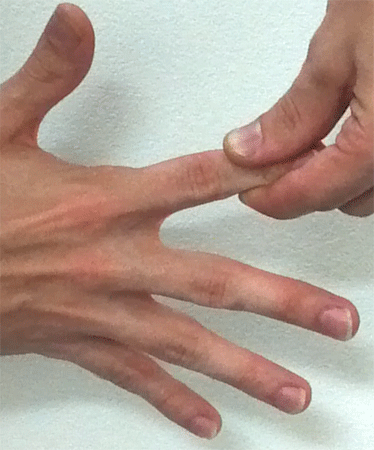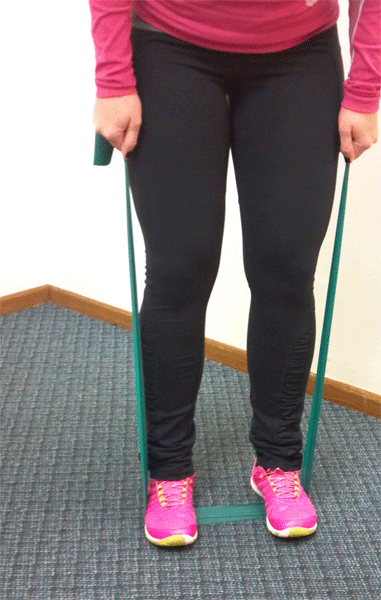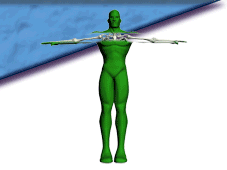The Best Exercises IX
Exercise For Hand Arthritis
 In the case of thumb joint arthritis the problem, generally, is that the chronic joint laxity causes the normal cartilage
to wear due to the resulting friction. This is predominantly a female condition. The exception to this
would be those cases of specific, repetitive trauma such as in men who play certain musical instruments.
Read more about the cause and treatment in our Articles tab under the Prolotherapy heading. To counter the harmful effect of joint
friction continually realign the thumb joints by pulling on the thumb while giving a slight twist in one
direction, then the other. This movement should feel generally good. If it becomes painful discontinue
that direction of movement. The replacement of lost joint cartilage and the reestablishment of joint
ligaments are no small task, but this is the area of PINS-Prolotherapy treatment.
In the case of thumb joint arthritis the problem, generally, is that the chronic joint laxity causes the normal cartilage
to wear due to the resulting friction. This is predominantly a female condition. The exception to this
would be those cases of specific, repetitive trauma such as in men who play certain musical instruments.
Read more about the cause and treatment in our Articles tab under the Prolotherapy heading. To counter the harmful effect of joint
friction continually realign the thumb joints by pulling on the thumb while giving a slight twist in one
direction, then the other. This movement should feel generally good. If it becomes painful discontinue
that direction of movement. The replacement of lost joint cartilage and the reestablishment of joint
ligaments are no small task, but this is the area of PINS-Prolotherapy treatment.Band Under Feet Lateral Walking
 The exerciser begins with the middle of the band under both feet with knees slightly bent. She applies
elastic force by pulling upward slightly with both arms. The side step is slow and careful and initiated
when the leading leg is bent further with that foot raised. That foot is then pushed down to the floor
against the force of the band. At the same time, this places a holding force against the other, following
leg. Then the following leg is bent and that foot raised and moved so that the exerciser is once again
in the starting position. This move is repeated in the same direction to a total of 3 repetitions, then
reversed in the opposite direction to 3 reps. As the exercise becomes more familiar it can be sped up for
better leg balance and strengthening. Perform multiple sets until fatigued once or twice daily. A further
increase in difficulty and balance training can be achieved by doing just one rep to the right, then one to
the left, with this pattern rapidly repeated.
The exerciser begins with the middle of the band under both feet with knees slightly bent. She applies
elastic force by pulling upward slightly with both arms. The side step is slow and careful and initiated
when the leading leg is bent further with that foot raised. That foot is then pushed down to the floor
against the force of the band. At the same time, this places a holding force against the other, following
leg. Then the following leg is bent and that foot raised and moved so that the exerciser is once again
in the starting position. This move is repeated in the same direction to a total of 3 repetitions, then
reversed in the opposite direction to 3 reps. As the exercise becomes more familiar it can be sped up for
better leg balance and strengthening. Perform multiple sets until fatigued once or twice daily. A further
increase in difficulty and balance training can be achieved by doing just one rep to the right, then one to
the left, with this pattern rapidly repeated.Return to the Articles Page
Return to the Where's Your Pain? Page



